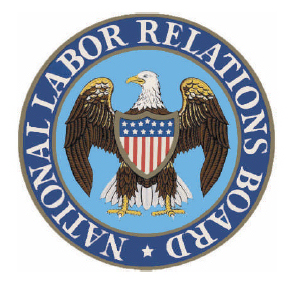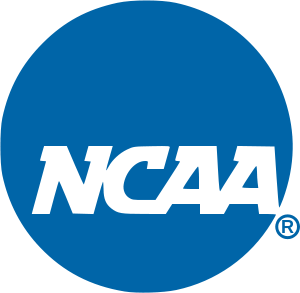
In case you missed it, on January 28th current and former NCAA student-athletes filed a petition in Chicago with the National Labor Relations Board (NLRB) in attempt to be recognized as employees of the NCAA and its institutions.
ESPN’s Outside The Lines first reported that Ramogi Huma, president of the College Athlete Players Association (CAPA), filed the petition on behalf of some of the Northwestern football players. CAPA is the formal advocacy entity that will represent college athletes if the NLRB deems these athletes to be employees. The path that has led college athletes to this position started with the Northwestern quarterback, Kain Colter, who wanted to help give all college athletes improved conditions as college athletes.
Why Form A Union?
Many people question the motives of the Northwestern football players attempting to unionize in order to gain more benefits than they already receive. NCAA Chief Legal Officer, Donald Remy, stated, “many student athletes are provided scholarships and many other benefits for their participation. There is no employment relationship between the NCAA, its affiliated institutions or student-athletes.”
Ramogi Huma thinks “athletes deserve an equal voice when it comes to their physical, academic and financial protections.” Some of the concerns that Huma and college players have are similar to the goals of the National College Players Association (NCPA), an organization Huma founded to create a platform for college athletes to voice their opinions on NCAA rules. Some of these goals include:
- Minimizing college athletes’ brain trauma risks
- Raising scholarship amounts
- Covering players sports-related medical expenses
- Increasing graduation rates
All of these goals seem to correspond with the purpose of college athletes forming a union through the NLRB. Analyzing these goals can give a better understanding of why college athletes want to be able to advocate on their own behalf.
Northwestern, The NLRB Taking A Stand

Although concessions and head injuries are constantly in the news in regards to the NFL, it seems that concussions are not being taken as serious as needed by the NCAA. Given these allegations from former players, current and future players should be able to have a say with their health in terms of having the proper precautions to prevent, detect and treat any head injury. Creating a union will give college athletes a better opportunity to contribute their thoughts to this issue.
Parallel to the physical condition of college athletes is how medical bills are paid if athletes are injured.
Currently, the NCAA does not require schools to cover sports-related injuries. Institutions are given the option if they want to cover these injuries. However, the NCAA (as well as every college) requires students to have some form of medical insurance, whether it is through the school, parents or the athlete themselves.
Nevertheless, since the NCAA does not mandate colleges to pay medical insurance for athletes, it can lead to some athletes paying out of pocket for their injuries. Seeking to unionize may provide better and more uniformed standards from the NCAA and its institutions regarding medical insurance for college athletes.
Finances Flunking Out
In addition to college athletes’ physical condition, their financial condition is important too. Some athletes would not be able to attend their current college without vast financial assistance. Currently, an athletic scholarship only covers tuition and other school-related fees, but it does not cover basic necessities a college athlete may need but cannot afford.
Although some college athletes are eligible for federal financial aid, allowing them to supplement funds through this route takes away from other college students that need those funds, which can add up to $3,000 per college athlete. The NCPA suggests using a relatively small percentage of TV revenues to provide college athletes the actual cost of attendance.
Putting The “Student” Back In “Student-Athlete”

Another crucial position for college athletes wanting to unionize is to increase graduation rates. After all, these players are recruited as “student-athletes” and the NCAA continues to insist that education is its main goal.
However, the goal of achieving an education can hardly be attained with such low graduation rates, which include huge racial graduation gaps. Many may blame this issue on college athletes leaving early for the professional leagues, but only an exceptionally small amount of college athletes play professional sports.
So if college athletes leaving early for professional leagues aren’t the reason for low graduation rates, what is? Could it be because some high school athletes are brought into educational situations that are nearly impossible for them overcome? This is a complex question that does not have an easier solution, but NCPA suggests that if more educational resources are provided to athletes, better results will transpire.
Chances Northwestern And The NLRB Win
Given the various reasons why college athletes would want to unionize, what is the likelihood that this would happen? In order to unionize, college athletes have to be verified as employees of their institutions. As Alicia Jessop points out, there are two tests the NLRB could use to determine the status of college athletes as employees.
Right To Control Test
One is a common law test known as the “right to control test.” This test is usually used to determine if an individual is an independent contractor versus an employee. However, there was an issue brought before the NLRB to determine if students that served as teaching assistants, research assistants and proctors at Brown University were employees. In this situation, the NLRB created its own test that strictly involved students and their university. The NLRB considers four factors for this test:
- The workers’ status as students
- What role the work completed played in their education
- The relationship between the students and their bosses
- Whether the financial support the workers received was dependent upon the nature or value of the services they performed.
The overarching issue to be determined while considering this test is if the relationship between the student worker and the university is a relationship based upon economical or educational gains.
For most Division I college athletes, these relationships are often obscured. On one hand, the main reason these athletes are in college is to gain an education and their athletic scholarship helps assist the objective of attaining an education. On the other hand, these college athletes are bringing in massive economical gains to their respective institutions on a yearly basis. Since the NLRA only governs private institutions, other college athletes at public universities looking to follow suit with the Northwestern football players will have to go through their own state laws in order to gain status as employees.
The NCAA’s Case
The NCAA will use its plethora of resources to ensure that college athletes are not given the status as employees in order to prevent mandatory medical insurance coverage and guaranteed athletic scholarships. CAPA will use its resources to ensure college athletes have more of a voice during their college careers. The concern now is whether the NLRB ascertains Northwestern football players as employees. As discussed, this determination is established by a number of different factors. However, if Northwestern football players are unable to gain employee status, other public university college athletes may petition their state laws in order to gain employee status.
If there is one takeaway from the Northwestern football players attempting to unionize, it is that the current system does not work. This attempt to unionize is continuing the conversation on how to improve the current system.




Many people question the motives of the Northwestern football players attempting to unionize in order to gain more benefits than they already receive. NCAA Chief Legal Officer, Donald Remy, stated, “many student athletes are provided scholarships and many other benefits for their participation. There is no employment relationship between the NCAA, its affiliated institutions or student-athletes.”
The main reason these athletes go to college is for an education and their athletic scholarships help support their goal of achieving academic qualifications.